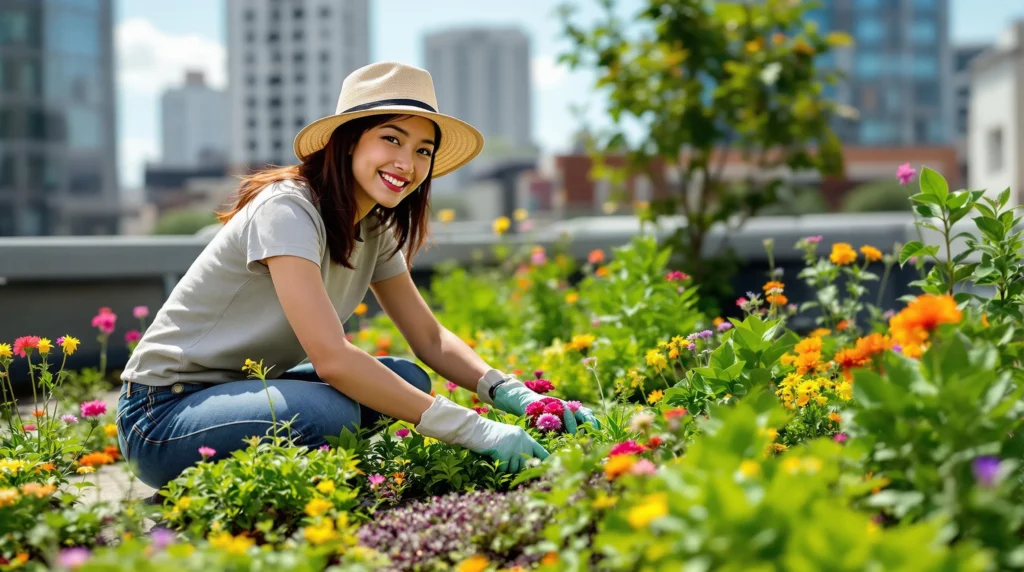10 Stunning Green Roof Ideas for Sustainable Living
1. Wildflower Meadow Roof
Transform your rooftop into a vibrant wildflower meadow that attracts pollinators like bees and butterflies. This low-maintenance option requires only annual cutting and supports local biodiversity. Native wildflower species need minimal irrigation once established, making this an eco-friendly choice that creates a stunning visual display throughout the growing season.
2. Edible Garden Roof
Use your roof space to grow fresh produce with an edible garden roof. Plant vegetables, herbs, and fruit-bearing plants in raised beds or containers for easy maintenance. This productive green roof idea not only provides homegrown food but also improves thermal insulation for your building, reducing energy costs while contributing to a sustainable lifestyle.
3. Sedum Carpet Roof
Install a sedum carpet for a resilient, drought-resistant green roof solution. These succulent plants form a dense, colorful mat that requires minimal soil depth and structural support. Sedum varieties offer year-round interest with changing colors throughout the seasons while efficiently absorbing rainwater and providing excellent thermal benefits with virtually no maintenance.
4. Japanese Zen Garden Roof
Create a tranquil retreat with a Japanese-inspired zen garden roof featuring carefully arranged rocks, gravel patterns, and minimalist plantings. This contemplative design incorporates drought-tolerant plants like dwarf conifers and ornamental grasses, requiring minimal water while providing a peaceful sanctuary above the urban industry.
5. Solar-Green Hybrid Roof
Combine solar panels with strategic green roof plantings for maximum environmental benefits. This innovative approach positions low-growing vegetation around solar installations, improving panel efficiency by cooling the surrounding area. The plants thrive in the partial shade created by the panels, creating a symbiotic relationship that generates clean energy while delivering all the advantages of a living roof.
6. Butterfly Habitat Roof
Design your green roof as a butterfly sanctuary with host and nectar plants exact to local butterfly species. Include shallow water features and flat stones for basking spots, creating a complete habitat. This specialized network not only supports threatened pollinator populations but also creates a fascinating living display that changes with butterfly activity throughout the seasons.
7. Modern Minimalist Green Roof
Embrace clean lines and simple plantings with a minimalist green roof featuring geometric patterns of sedums and ornamental grasses. This contemporary approach uses a limited plant palette with strong visual impact, perfect for visible rooftops in urban settings. The streamlined design requires minimal maintenance while still providing important environmental benefits.
8. Therapeutic Healing Garden Roof
Develop a rooftop healing garden with fragrant herbs, sensory plants, and comfortable seating areas. Incorporate elements like lavender, chamomile, and water features to create a multi-sensory experience. This therapeutic space provides mental health benefits for building occupants while functioning as a fully-operational green roof system with excellent insulation properties.
9. Rain Garden Roof System
Design your green roof to maximize stormwater management with a specialized rain garden system featuring deeper soil profiles and moisture-loving plants. This approach can capture up to 90% of rainfall, significantly reducing runoff issues in urban areas. Strategically placed depressions and water-tolerant species create a ever-changing industry that responds to changing weather conditions.
10. Native Prairie Roof
Recreate a native prairie network on your rooftop with indigenous grasses and wildflowers adapted to your exact region. This authentic approach supports local wildlife while creating a low-maintenance, drought-resistant green roof. The deep root systems of prairie plants provide exceptional stormwater management and natural insulation, connecting your building to the original industry of your area.
Understanding the Benefits of Green Roofs for Your Home
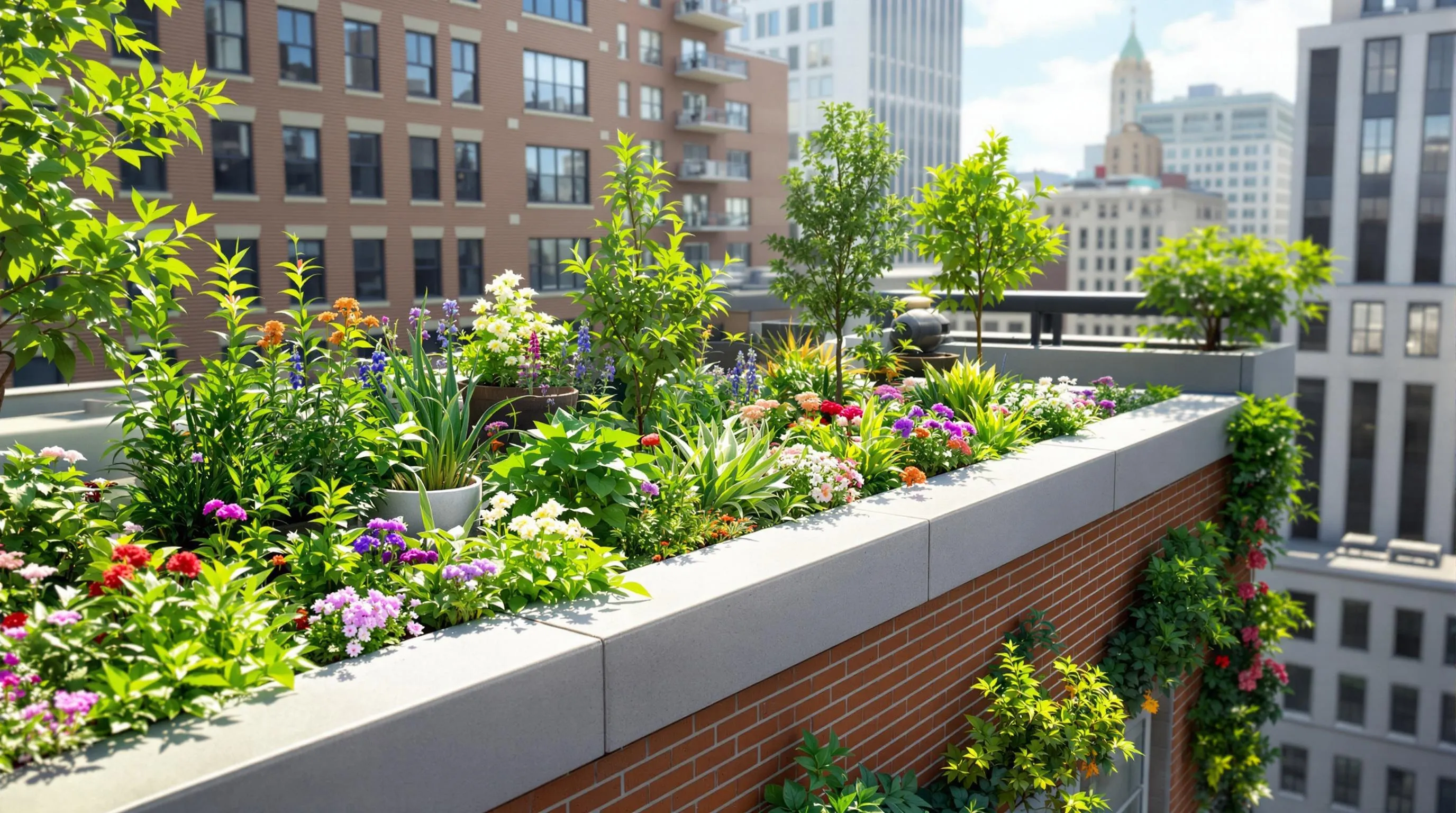
Green roofs transform your ordinary rooftop into a living network that benefits both your home and the environment. These sustainable additions offer many advantages that extend far beyond their visual appeal.
Environmental Advantages of Living Roofs
Green roofs significantly reduce your home’s environmental footprint. They filter air pollutants and absorb carbon dioxide, creating cleaner air around your property. During heavy rainfall, these living systems can retain 70-90% of precipitation, dramatically reducing stormwater runoff and preventing local flooding. Your green roof also creates crucial habitat for wildlife, supporting urban biodiversity by providing food and shelter for birds, bees, and butterflies. Also, these natural installations help combat the urban heat island effect, lowering ambient temperatures by 3-7°F in surrounding areas during summer months. By implementing a green roof, you’re actively contributing to environmental preservation while creating a more sustainable living space.
Cost Savings and Energy Efficiency Benefits
While the initial installation costs may be higher than traditional roofing, green roofs deliver substantial financial benefits over time. Your home can experience up to 30% reduction in cooling costs during summer months as the vegetation naturally insulates your roof and reduces heat transfer. In winter, this same insulation property helps retain warmth, potentially cutting heating expenses by 10-15%. Green roofs extend your roof’s lifespan by 2-3 times, protecting the underlying materials from UV radiation, temperature fluctuations, and physical damage. Many municipalities offer tax incentives, rebates, and reduced stormwater fees for green roof installations, further offsetting your investment. Over a 40-year period, research shows green roofs can save you approximately $200,000 per 10,000 square feet compared to conventional roofing, making them a financially sound long-term investment.
Selecting the Right Plants for Your Green Roof Project
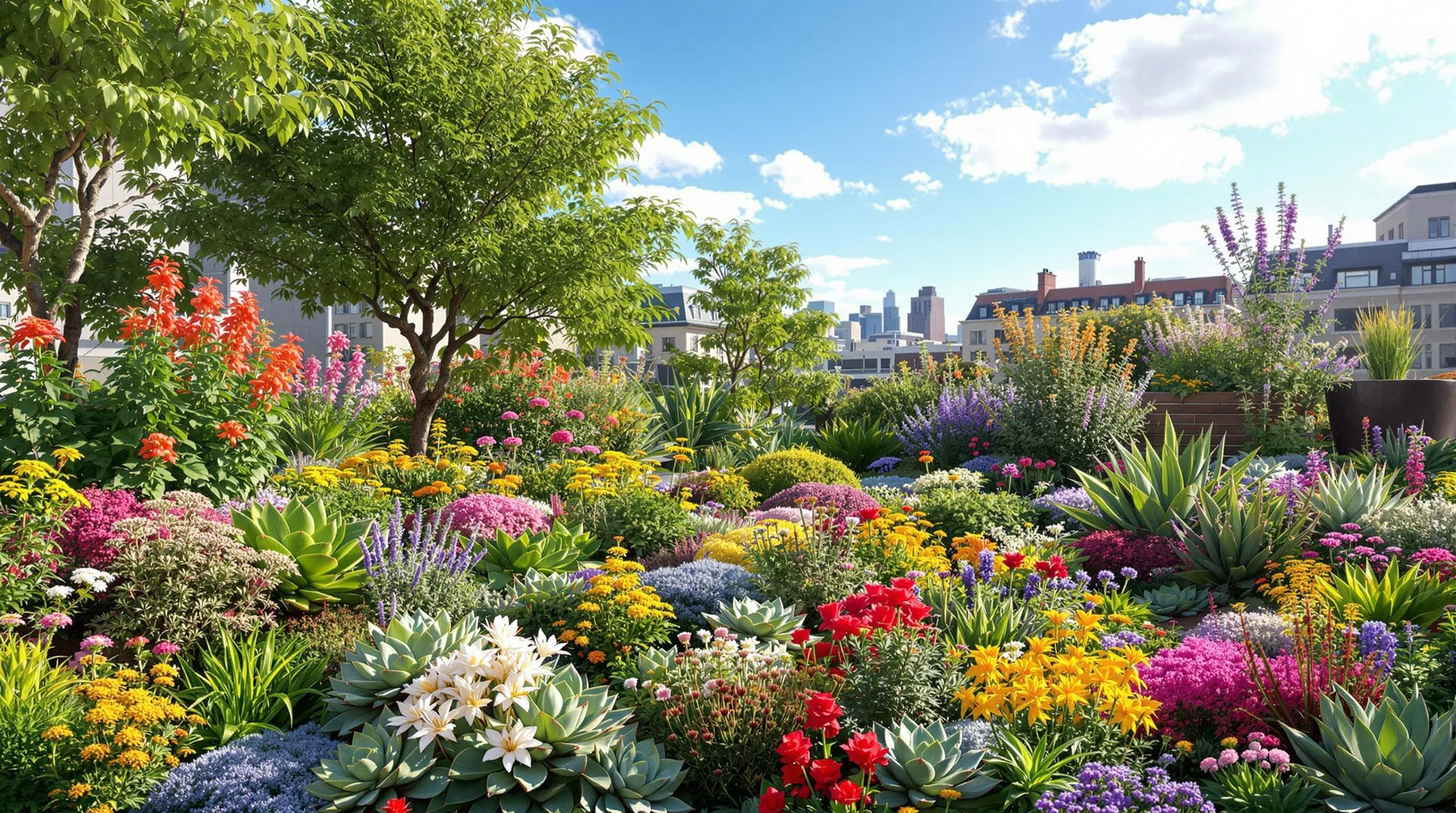
Choosing appropriate vegetation is crucial for the success of your green roof system. The right plants not only enhance the aesthetic appeal but also ensure the sustainability and functionality of your rooftop garden.
Drought-Resistant Varieties for Low-Maintenance Rooftops
Drought-resistant plants are ideal choices for green roofs due to their ability to withstand harsh conditions with minimal care. Sedums (stonecrop) top the list as they store water in their thick, fleshy leaves and thrive in shallow soil depths of just 3-4 inches. Sempervivums (hens and chicks) offer excellent drought tolerance while creating attractive rosette patterns across your roof. Native succulents like Opuntia (prickly pear) and Agave species require watering only during extreme drought conditions, making them perfect for regions with water restrictions. Ornamental grasses such as Festuca glauca (blue fescue) and Bouteloua gracilis (blue grama) develop deep root systems that access moisture even during dry periods. Mediterranean herbs including lavender, thyme, and oregano not only withstand drought but also provide culinary benefits and pleasant aromas. For added visual interest, consider drought-tolerant wildflowers like Echinacea (coneflower) and Gaillardia (blanket flower) that attract pollinators while requiring minimal irrigation.
Seasonal Blooming Options for Year-Round Appeal
Creating a green roof with year-round visual interest requires strategic plant selection that accounts for different blooming periods. Early spring bloomers like Crocus, Muscari (grape hyacinth), and Allium provide the first pops of color when most other plants remain dormant. For summer months, incorporate heat-tolerant bloomers such as Achillea (yarrow), Coreopsis, and Delosperma (ice plant) that produce vibrant flowers even during the hottest days. Fall-blooming options including Aster, Helenium, and ornamental grasses with striking seed heads extend the visual appeal into autumn. Winter interest can be maintained with evergreen perennials like Hellebores (which often bloom in late winter), ornamental grasses that retain their structure, and plants with interesting seed pods or bark. Consider planting in groups of odd numbers (3, 5, or 7) for a more natural, visually pleasing arrangement. By carefully selecting plants with staggered blooming times, your green roof can transition seamlessly through seasons, providing continuous color and texture while supporting local pollinators throughout the year.
DIY Green Roof Solutions for Small Spaces and Budgets
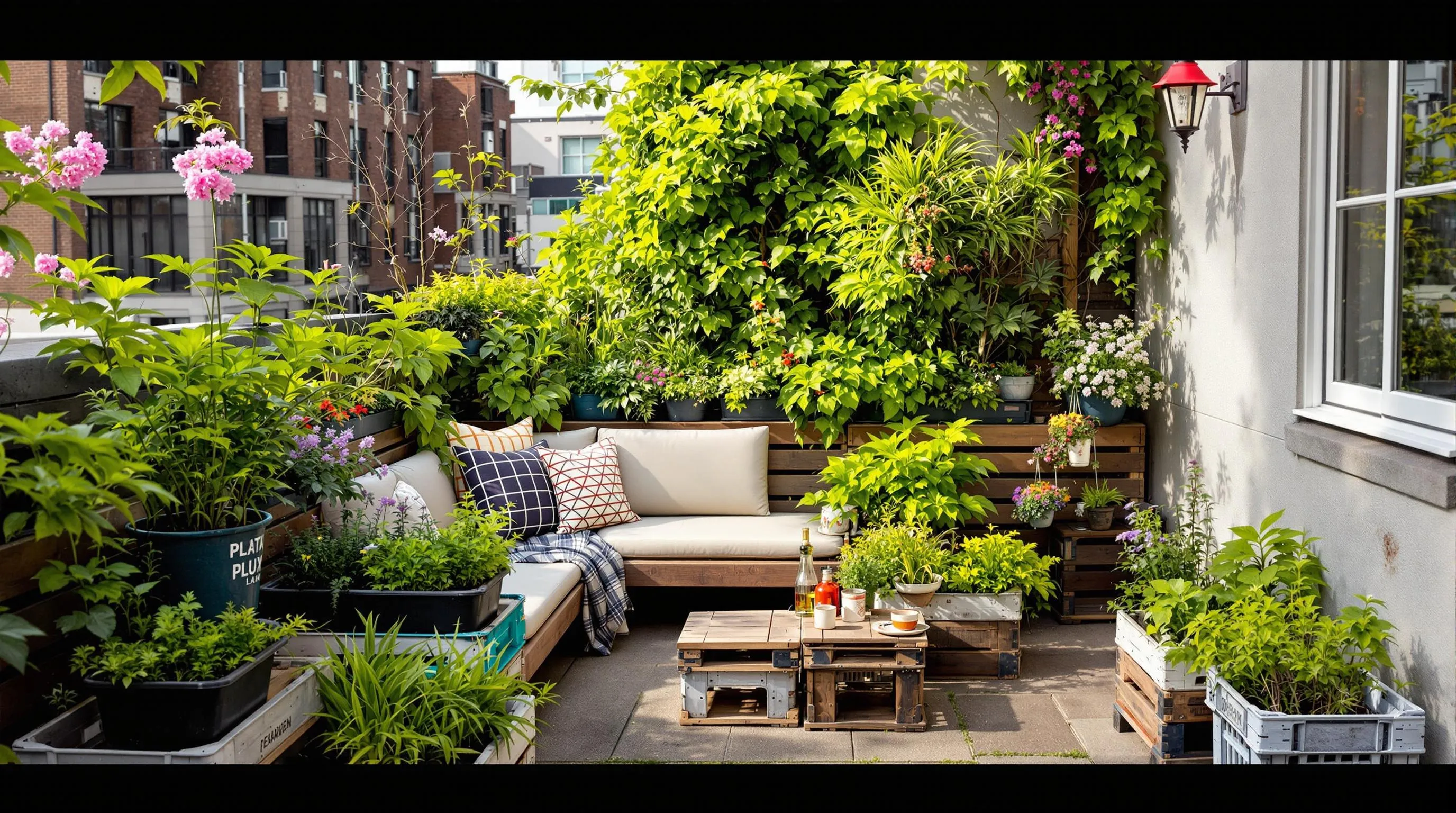
You don’t need a large space or hefty budget to enjoy the benefits of a green roof. DIY options make sustainable roofing accessible to everyone, regardless of square footage or financial constraints.
Container Garden Green Roof Ideas
Transform your small roof space with portable container gardens that offer flexibility and simplicity. Start with lightweight, weather-resistant containers like recycled plastic planters or repurposed wooden crates lined with pond liner. Fill them with a specialized green roof growing medium that’s lighter than regular potting soil. Select shallow-rooted plants such as sedums, herbs, and small ornamental grasses that thrive in these conditions. Arrange your containers strategically to create pathways or sitting areas, allowing you to enjoy your rooftop oasis while maximizing limited space. For ultra-tight budgets, repurpose items like old gutters, pallets, or even rubber tires as planters—each costing under $20 to set up when using cuttings or seed-grown plants.
Modular Systems for Easy Installation
Modular green roof systems offer a perfect solution for DIY enthusiasts with limited experience. These pre-planted trays typically measure 1-2 square feet and interlock to create a seamless living roof that’s remarkably easy to install. Purchase ready-made modules from garden centers or create your own using plastic drainage crates lined with industry fabric and filled with lightweight growing medium. The modular approach allows for gradual expansion as your budget permits—start with just 25% coverage and add more sections over time. Many DIYers complete a small modular roof (100-200 square feet) for $500-$1,000, significantly less than professional installation. These systems also offer quick assembly, with most homeowners completing installation in a single weekend, and provide the flexibility to remove sections for maintenance or rearrangement as needed.
Intensive Green Roof Designs for Urban Sanctuaries

Intensive green roofs transform urban buildings into lush sanctuaries with deep soil profiles that support diverse plantings and recreational spaces. These substantial systems require greater structural support but deliver unparalleled benefits in biodiversity, insulation, and urban livability.
Creating Rooftop Vegetable Gardens
Transform your building’s rooftop into a productive vegetable garden that combines sustainability with fresh produce at your fingertips. You’ll need at least 8-12 inches of soil depth to support root vegetables like carrots and potatoes, while tomatoes, peppers, and herbs thrive in container systems integrated into your green roof design. Install irrigation systems with moisture sensors to optimize water usage during dry periods. Consider raised beds with proper drainage layers to prevent waterlogging and protect your building’s structure. For apartment buildings, designate community garden plots where residents can grow their own food, creating not just sustainability but also social connections among neighbors. Vertical growing systems can maximize limited rooftop space, allowing you to grow climbing vegetables like peas and beans alongside ground crops.
Building Recreational Green Spaces Above the City
Create multifunctional green roof areas that serve as recreational retreats from busy urban life. You can design walkable pathways using permeable pavers surrounded by native grasses and perennials that create distinct outdoor “rooms” for different activities. Install weather-resistant furniture, pergolas with climbing plants for shade, and even small water features that collect rainwater. For larger buildings, incorporate dedicated yoga decks, outdoor dining areas, or play spaces for children with safety features and fall-protection surfacing. Strategic placement of trees in large planters can provide natural shade while creating privacy zones. These recreational green spaces don’t just offer personal benefits—they provide thermal regulation for the building while creating essential green infrastructure in concrete-dominated urban environments, turning unused rooftop square footage into valuable living space.
Modern Architectural Green Roof Innovations
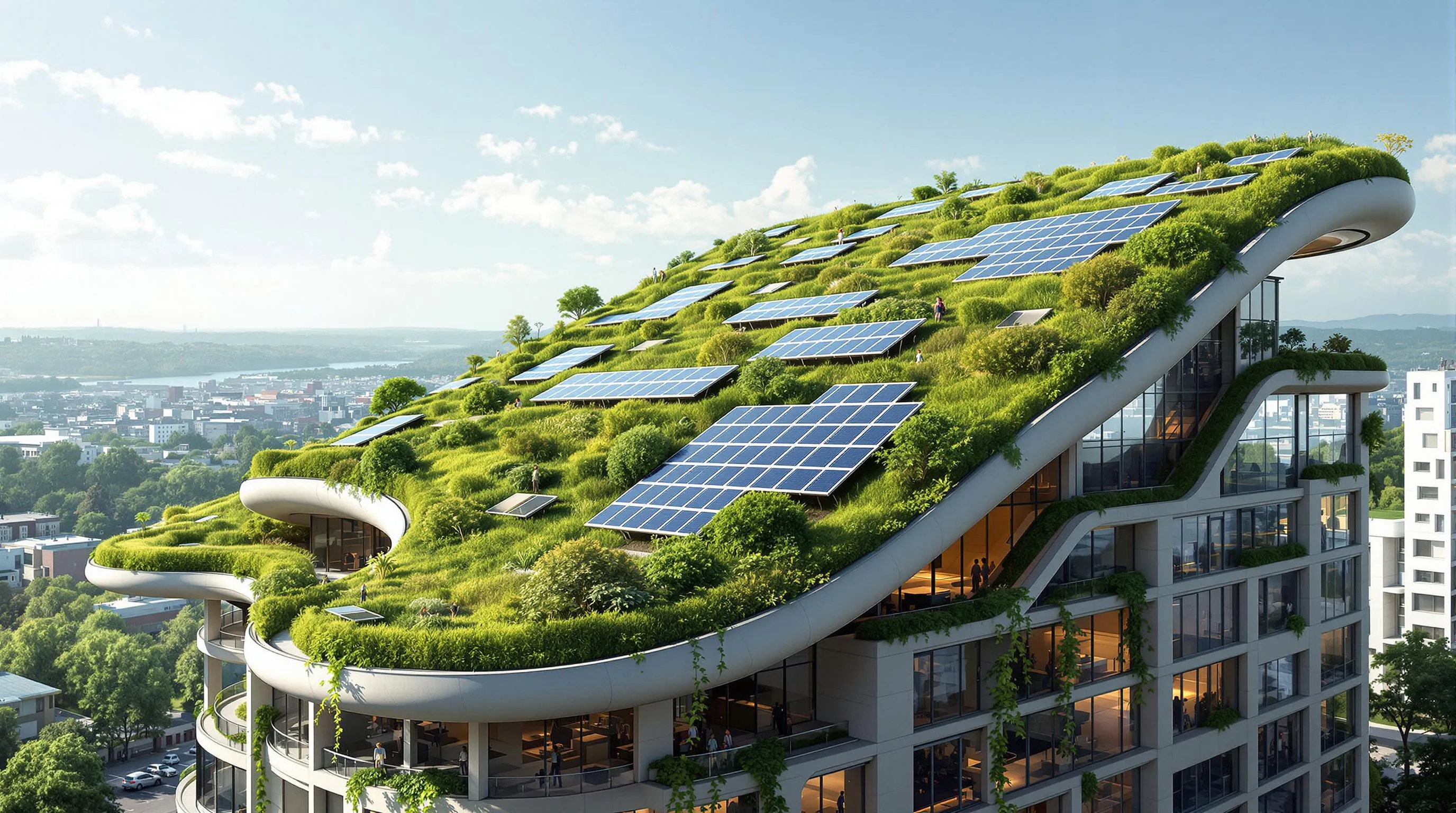
Today’s architectural industry is being transformed by innovative green roof designs that merge sustainability with cutting-edge aesthetics. These modern approaches push boundaries beyond traditional flat vegetation systems, creating stunning visual statements while maximizing environmental benefits.
Sloped and Curved Green Roof Designs
Sloped and curved green roofs represent the next evolution in sustainable architecture, breaking away from conventional flat designs. These ever-changing installations use specialized retention systems and erosion control mats to secure soil and plants on inclines up to 45 degrees. You’ll find these dramatic living roofs on structures like the California Academy of Sciences building, where the undulating green roof mimics the surrounding hillscape. Beyond their visual impact, these designs offer improved drainage efficiency and create microclimates that support diverse plant communities. Architects are now incorporating these flowing forms to transform ordinary buildings into landmark structures that harmonize with natural landscapes while providing enhanced insulation properties.
Integrating Solar Panels with Living Roofs
Biosolar roofs combine photovoltaic technology with vegetation to create powerful energy-generating systems. This innovative pairing maximizes rooftop functionality by producing clean energy while delivering all the benefits of a green roof. The vegetation actually improves solar panel efficiency by cooling the surrounding ambient temperature by 6-8°F, increasing energy production by up to 16%. You’ll achieve optimal results by positioning panels at angles that minimize shading while creating beneficial microclimates for plant growth underneath. Leading examples include Google’s Mountain View campus, where biosolar roofs generate important power while supporting biodiversity. These integrated systems represent the perfect marriage of renewable energy and green infrastructure, offering a comprehensive solution for buildings aiming to minimize environmental impact while maximizing renewable energy production.
Maintenance Tips for Long-Lasting Green Roofs

Proper maintenance is crucial for ensuring your green roof remains vibrant and functional for decades. With regular care, a well-maintained green roof can last 40-60 years—twice as long as conventional roofing.
Seasonal Care Guidelines
Spring maintenance sets the foundation for year-round green roof health. Start with a thorough inspection for winter damage, removing debris and checking drainage systems. Apply a slow-release organic fertilizer in early spring to boost growth, using approximately 1.5 pounds per 100 square feet. Summer care focuses on monitoring moisture levels, especially during hot periods when plants might need additional watering. Fall preparation includes trimming overgrown plants, removing spent flowers, and clearing drainage paths before winter. Winter monitoring should focus on snow load management—remove excessive accumulation (over 12 inches) to prevent structural stress, but leave a protective layer of 2-3 inches to insulate plants from extreme cold.
Irrigation and Drainage Answers
Effective irrigation and drainage systems are vital components of successful green roofs. Install a drip irrigation system with moisture sensors to deliver precise amounts of water directly to plant roots, reducing waste by up to 70% compared to conventional methods. For optimal plant health, maintain soil moisture levels between 20-40%. Ensure proper drainage through regularly clearing outlets and implementing a multi-layer drainage system with filter fabrics that prevent soil migration while allowing excess water to flow freely. Consider installing a rainwater harvesting system to collect and recycle precipitation, reducing water costs by up to 40% while providing plants with chemical-free irrigation. During drought periods, prioritize watering in early morning or evening hours to minimize evaporation and maximize absorption efficiency.
Green Roof Ideas for Commercial Buildings
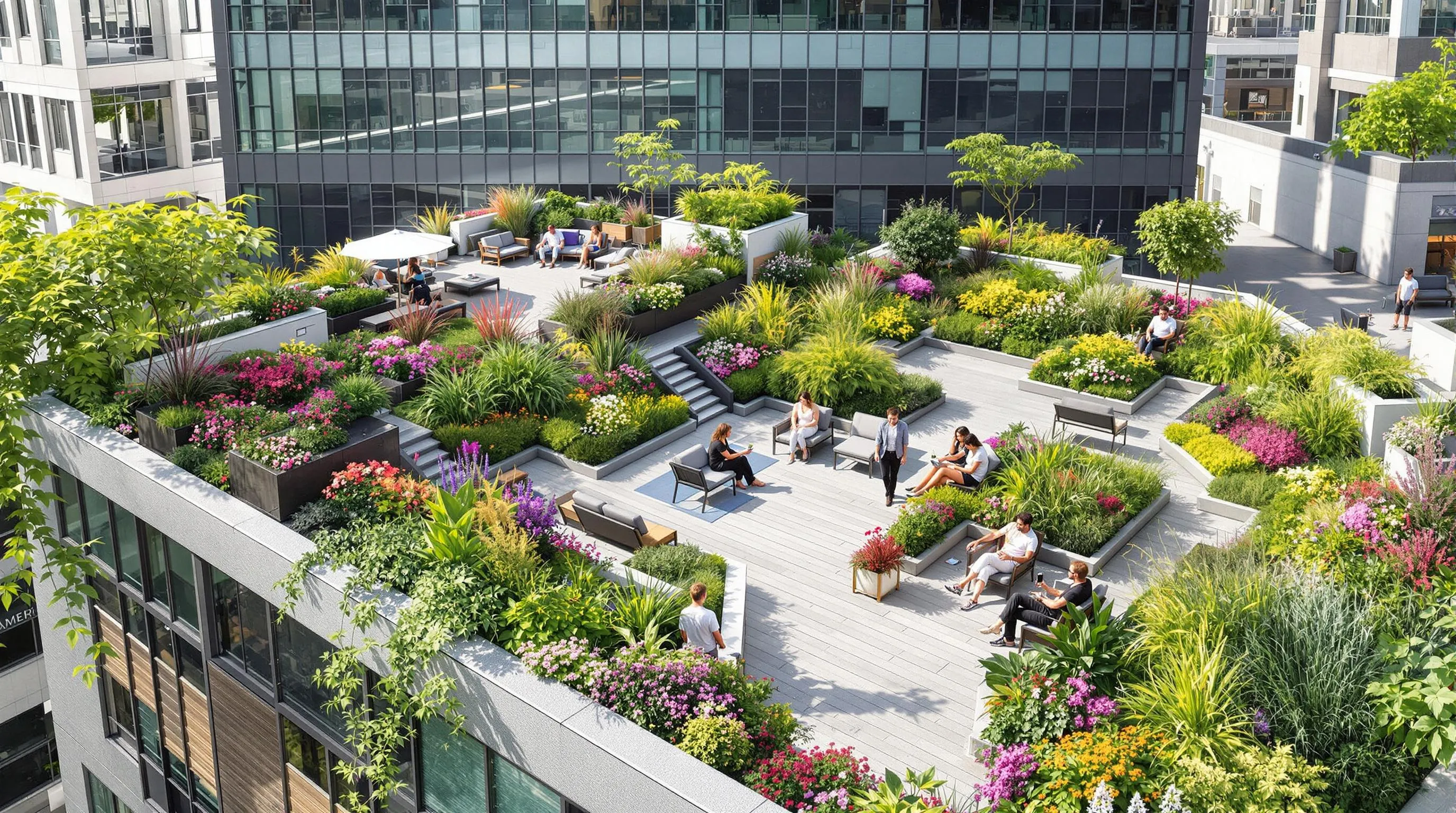
Corporate Green Roof Gardens for Employee Wellness
Transform your commercial building’s rooftop into a wellness sanctuary that boosts employee morale and productivity. Corporate green roof gardens provide valuable outdoor spaces where staff can take breaks, hold informal meetings, or simply recharge their mental batteries. Research shows that employees with access to green spaces experience 23% less stress and report 15% higher job satisfaction compared to those without nature access. Design your corporate wellness garden with comfortable seating areas, shade structures, and diverse plantings to create distinct zones for different activities. Include sensory elements like fragrant herbs, rustling ornamental grasses, and water features to maximize the restorative benefits. Companies like Google, Amazon, and Microsoft have all implemented rooftop gardens that contribute to their employee retention strategies while simultaneously improving building energy efficiency.
Large-Scale Biodiversity Projects
Turn your commercial roof into a biodiversity hotspot that supports local ecosystems while improving your company’s environmental credentials. Large-scale biodiversity projects can incorporate native plant communities, pollinator habitats, and even wetland areas that attract diverse wildlife. These projects typically feature varying soil depths (4-12 inches) to support different plant species and create microhabitats. Financial institutions like Barclays and tech companies like Facebook have implemented biodiversity roofs spanning thousands of square feet, documenting increases of 30-50% in local bird and insect species. Partner with local environmental organizations to develop monitoring programs that track your roof’s ecological impact, providing valuable data for sustainability reports. These projects not only contribute to urban biodiversity but also demonstrate your company’s commitment to environmental stewardship, improving brand reputation and supporting ESG (Environmental, Social, and Governance) goals.
Transforming Garages and Sheds with Mini Green Roofs

Smaller structures like garages and sheds offer perfect opportunities to experiment with green roof installations without committing to larger projects. These mini green roofs provide the same environmental benefits as their larger counterparts while serving as excellent entry points for novice green roof enthusiasts.
Simple Weekend Green Roof Projects
Turn your garden shed or garage into an eco-friendly structure with these straightforward weekend projects. Start by reinforcing your existing roof to handle the additional weight—typically 20-30 pounds per square foot when saturated. Install a waterproof membrane, such as EPDM rubber, followed by a drainage layer, filter fabric, and lightweight growing medium about 3-4 inches deep. Choose low-maintenance plants like sedums, sempervivums, or drought-resistant herbs that establish quickly in shallow soil. These mini green roofs require minimal investment yet deliver immediate visual impact and ecological benefits. For ultra-simple projects, try pre-vegetated sedum mats that can be rolled out like carpet, reducing installation time to just a few hours while providing instant greenery.
Wildlife-Friendly Shed Roof Ideas
Create a biodiversity hotspot by designing your shed or garage roof specifically to support local wildlife. Incorporate native wildflowers and grasses that attract pollinators like bees and butterflies, and add small features like log piles, stone arrangements, or shallow water dishes to provide microhabitats. Plant varieties with staggered blooming schedules to offer food sources throughout the growing season. Consider adding bird-friendly shrubs along the roof edges or installing bug hotels to encourage beneficial insects. These wildlife-friendly green roofs not only enhance your garden’s network but also contribute to local conservation efforts by creating stepping-stone habitats in urban and suburban settings. Even small 8×10 shed roofs can support dozens of insect species and serve as feeding stations for birds, making them valuable additions to any eco-conscious garden.
Conclusion: Embracing the Green Roof Revolution
Green roofs represent more than just an architectural trend—they’re a powerful solution for sustainable living in our increasingly urbanized industry. Whether you opt for a wildflower meadow attracting pollinators or a minimalist sedum carpet requiring little maintenance you’re making a important environmental impact.
The beauty of green roofs lies in their versatility. From small DIY shed projects to elaborate intensive systems on commercial buildings there’s an option for every space and budget. Your green roof will not only enhance your property’s aesthetics but also provide tangible benefits through reduced energy costs improved air quality and extended roof lifespan.
As cities continue to develop green roofs offer a vital opportunity to reconnect with nature while contributing to climate resilience. By transforming your rooftop into a living network you’re joining a growing movement that values both planetary health and personal wellbeing.

